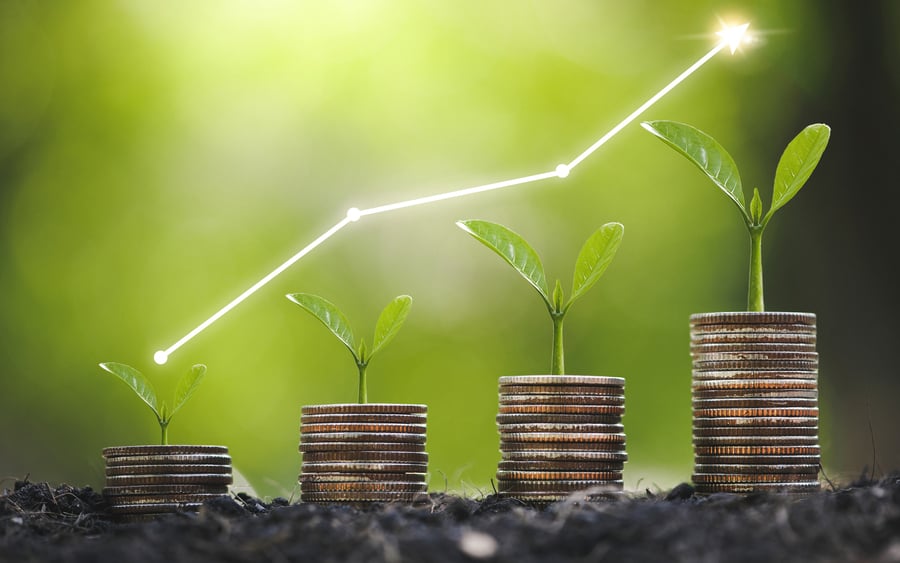

This year has been a boon for ESG-related returns, with major indexes and funds reversing the performance declines they saw in 2022.
As of midday Friday, the S&P 500 ESG Index had posted returns over 12 months of 22.5%, while the broader S&P 500 returned 21%. The higher performance also held over three years and five years, at a total of 49% and 73.2% for the sustainable version, versus 43.3% and 61.1%, respectively.
Meanwhile, the Invesco ESG Nasdaq 100 ETF (QQMG), which launched in 2021, saw 12-month returns of 38.4% versus 36.4% for its non-ESG corollary, Invesco QQQ.
Stronger returns were also apparent across Morningstar’s sustainability indexes.
The Morningstar U.S. Sustainability Leaders Index, for example, was up 28% over a year, 14.6% annualized over three years and 14.2% for five years. The regular version, the Morningstar U.S. Large Cap Index, returned 20.5% over a year, 14.4% over three and 12.1% over five. There were similar results for the global versions of those products, with the sustainable one outperforming the non-ESG option 32.7% versus 18% over a year, 15.6% versus 12.2% over three years and 11.8% versus 8.6% over five years annualized.
The differences are attributable to higher performance in sectors that sustainable funds favor and lower returns in those they tend to exclude, analysts said. While 2023 has been a fantastic one for technology and communications, it hasn’t been as strong for energy, which last year carried the day for non-ESG funds.
“Sector dynamics have a lot to do with it. We’ve obviously seen a huge tech rebound this year. Broadly speaking, tech companies tend to score better on ESG criteria” than energy stocks, said Dan Lefkovitz, a strategist at Morningstar Indexes.
Stocks like Nvidia, Salesforce, Adobe and Microsoft have thus buoyed U.S. sustainable investments this year, mostly wiping out the losses such funds saw last year, which had the effect of lowering three-year annualized returns, Lefkovitz said.
“I generally have observed that when technology is doing well, when growth areas of the market are doing well, that tends to be a tailwind for ESG,” he said. “Sustainable investing doesn’t thrive in every market condition.”
If there is any lesson for the anti-ESG camp — including politicians who have campaigned heavily to nix such factors from being considered by public pensions — that might be it. State Republican leaders and members of Congress have railed against ESG, mostly over the past year, largely with the criticism that sustainable investing doesn’t deliver on performance.
Just as proponents can’t count on ESG to outperform always, opponents will have trouble with an argument that it rarely does. A recently filed lawsuit, for example, broadly alleges that a 401(k) plan sponsor breached its fiduciary duty by making ESG-marketed funds available to workers.
Two ETFS that track the S&P 500 ESG — EFIV and SNPE — have benefited from the tech tailwinds this year, said Todd Rosenbluth, head of research at VettiFi.
“This year we’re seeing securities selection work out favorably” for the index ESG ETFs, he said. Because the index is designed to mostly mirror the S&P 500, periods of underperformance or outperformance for the ESG version are usually not too dramatic, Rosenbluth noted.
“ESG products are over-weighted toward the mega-cap growth stocks that have been leading the market higher in 2023,” he said.
Nonetheless, one argument against ESG-themed products is that fees can be higher than in standard funds, Rosenbluth said. In the case of the SPDR S&P 500 ESG ETF (EFIV), which has returns of nearly 22% over a year and charges 10 basis points, that shows “a very slight premium — but relatively strong performance can achieved using an ESG approach,” he said.
The tech over-weightings are more apparent in some products than others, Nate Geraci, president of The ETF Store, said in an email.
“The iShares ESG Aware MSCI USA ETF (ESGU) currently has nearly 30% exposure to the tech sector, while the Vanguard ESG U.S. Stock ETF (ESGV) has an even higher 35% tech weighting. The S&P 500 is currently at 28% tech exposure,” Geraci said. “These figures for energy are 4.2%, 0.2% and 4.2% respectively. Historically, when tech has performed well and the traditional energy sector has underwhelmed, ESG indexes tend to outperform overall.”
Showing the clear difference this year in sector performance are returns for the Technology Select Sector SPDR Fund (XLK), which has returned more than 40% year to date, and the Energy Select Sector SPDR Fund (XLE), which is down close to 7%, he noted.
Also year to date, ESGU is up 15.6%, versus 16.3% for the iShares Core S&P 500 ETF, he said. ESGV, however, has returned 19%.
“Different strategies are going to be up and down over time,” said Bryan McGannon, managing director at US SIF: The Forum for Sustainable and Responsible Investment. The recent performance “does demonstrate that understanding the additional ESG data helps investors make good decisions and are material to their investment decision making.”
That said, the recent figures might still be unlikely to win over any converts from the anti-ESG camp, he noted.
“Many of the attacks on ESG and sustainable investing have not been based on any investment foundational information,” McGannon said. “The debate is not about the substance — it’s about the politics.”

Relationships are key to our business but advisors are often slow to engage in specific activities designed to foster them.

Whichever path you go down, act now while you're still in control.

Pro-bitcoin professionals, however, say the cryptocurrency has ushered in change.

“LPL has evolved significantly over the last decade and still wants to scale up,” says one industry executive.

Survey findings from the Nationwide Retirement Institute offers pearls of planning wisdom from 60- to 65-year-olds, as well as insights into concerns.
Streamline your outreach with Aidentified's AI-driven solutions
This season’s market volatility: Positioning for rate relief, income growth and the AI rebound
